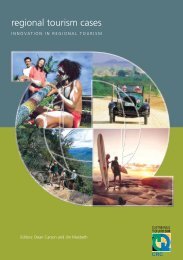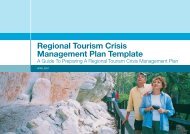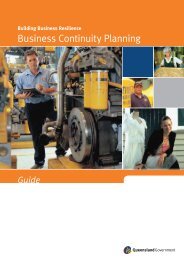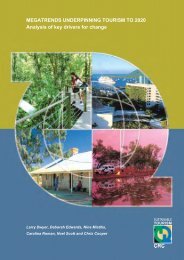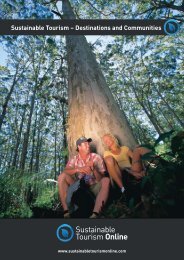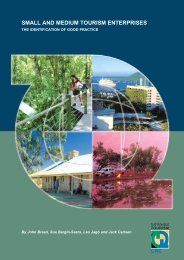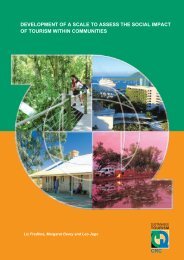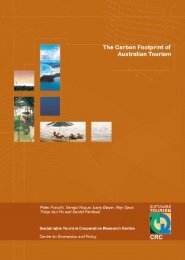Tourism Risk Management - Sustainable Tourism Online
Tourism Risk Management - Sustainable Tourism Online
Tourism Risk Management - Sustainable Tourism Online
Create successful ePaper yourself
Turn your PDF publications into a flip-book with our unique Google optimized e-Paper software.
• industry representatives;<br />
• airport and port operators;<br />
• utilities operators (gas, electricity, water, etc);<br />
• community action/interest groups; and<br />
• media.<br />
2. MONITOR AND REVIEW<br />
Monitoring and reviewing are enabling activities which are essential so that continual improvements<br />
can be achieved and to ensure the currency and relevance of the tourism risk management process.<br />
<strong>Risk</strong> doesn’t remain static, so it's essential that tourism risk management is an ongoing process with<br />
regular monitoring and review of hazards, elements at risk, and the progress, outcomes and efficacy<br />
of risk treatment measures. Systematic monitoring and review systems should be developed and<br />
maintained by:<br />
• establishing arrangements for monitoring, reviewing and documenting risks as part of the<br />
tourism risk management strategy;<br />
• developing a risk register computer database;<br />
• repeating the risk management cycle on a regular basis;<br />
• measuring progress and incorporating it into management performance measurement and<br />
reporting systems;<br />
• evaluating lessons from review processes and incorporating them into plans; and<br />
• amending plans and procedures as required.<br />
STEP 1 – Establish the Context<br />
This first step in the tourism risk management process is to establish the basic parameters or<br />
framework within which the risk management activities will take place, and to develop the criteria<br />
against which risk is to be evaluated. It includes identifying relevant policies, systems, procedures<br />
and intra-organizational and inter-organizational relationships. The organizational context includes<br />
the internal and external environment.<br />
1. Establish the basic parameters. Identify:<br />
• the nature and scope of issues to be addressed to ensure the safety of the destination;<br />
• relevant disaster/emergency management legislations, policies and management<br />
arrangements;<br />
• public health issues, occupational health and safety requirements and issues, and liabilities;<br />
and<br />
• relevant political, social, cultural and environmental factors.<br />
2. Identify stakeholders and their concerns, perceptions of risk, and values.<br />
3. Establish relevant community structures and arrangements.<br />
4. Develop risk evaluation criteria for the destination (in consultation with all stakeholders).<br />
26 <strong>Tourism</strong> <strong>Risk</strong> <strong>Management</strong> – An Authoritative Guide to Managing Crises in <strong>Tourism</strong>



